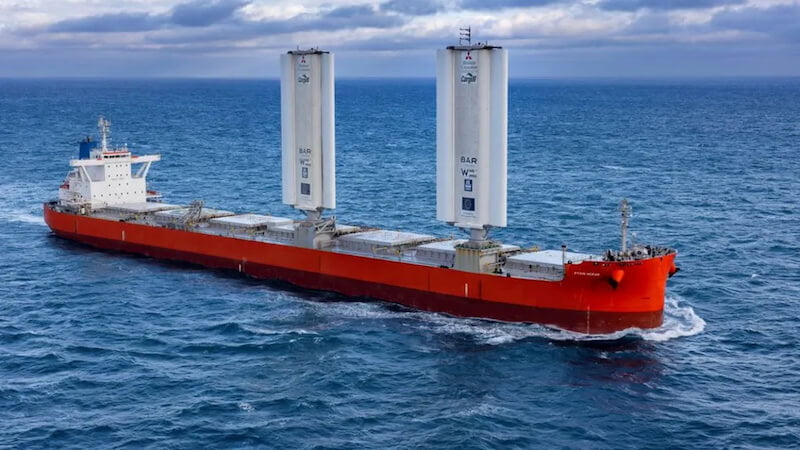
The US company Cargill sent the first wind-powered ocean-going ship on its maiden voyage in August 2023. The ship's sails are based on two huge wind turbines. The results of the test drive appear encouraging.
Creative and sustainable approaches are needed to achieve global climate goals. Researchers are looking for potential for reducing emissions, especially in shipping. The US trading company Cargill therefore sent the first wind-powered ocean-going ship on its maiden voyage in August 2023.
It features two gigantic rigid sails, which are nothing more than two wind turbines. They are intended to significantly reduce the fuel consumption and carbon dioxide emissions of the ship Pyxis Ocean. Experts describe the results as very encouraging, but point out that only a tiny proportion of the international shipping fleet currently uses this technology.
Sustainable shipping through the use of 37.5 meter wind turbines
The sails tested on the Pyxis Ocean are based on the same material as wind turbine blades. The ship folds them up in the harbor and takes them out to sea. The construction has a total height of around 37.5 meters.
After assembling the wings in Shanghai, the ship sailed for six months through the Indian and Pacific Oceans. During this time, the Pyxis Ocean burned an average of three tons less fuel per day. This corresponds to a daily saving of 11.2 tonnes of CO2 emissions.
Extrapolated over a year, that would be equivalent to removing 480 cars from the roads, according to Cargill. Nevertheless, the savings appear relatively small compared to the industry as a whole. After all, international shipping is responsible for around 837 million tons of CO2 every year.
Wind-powered ocean-going ship: testing of three sails is still pending
This corresponds to around 2.1 percent of global emissions. Still, Cargill sees the results as positive. Technologies that harness wind could be an important, cost-effective method for achieving decarbonization goals in the short, medium and long term. The British company BAR Technologies, which designed the wings, is now looking for other ships to adapt the technology.
In addition, the project participants plan to use three wings instead of two in the future in order to further reduce fuel consumption and emissions. In the long term, this could result in solutions that significantly reduce the industry's ecological footprint.
Also interesting:
Source: https://www.basicthinking.de/blog/2024/03/18/nachhaltige-schifffahrt-segel/


